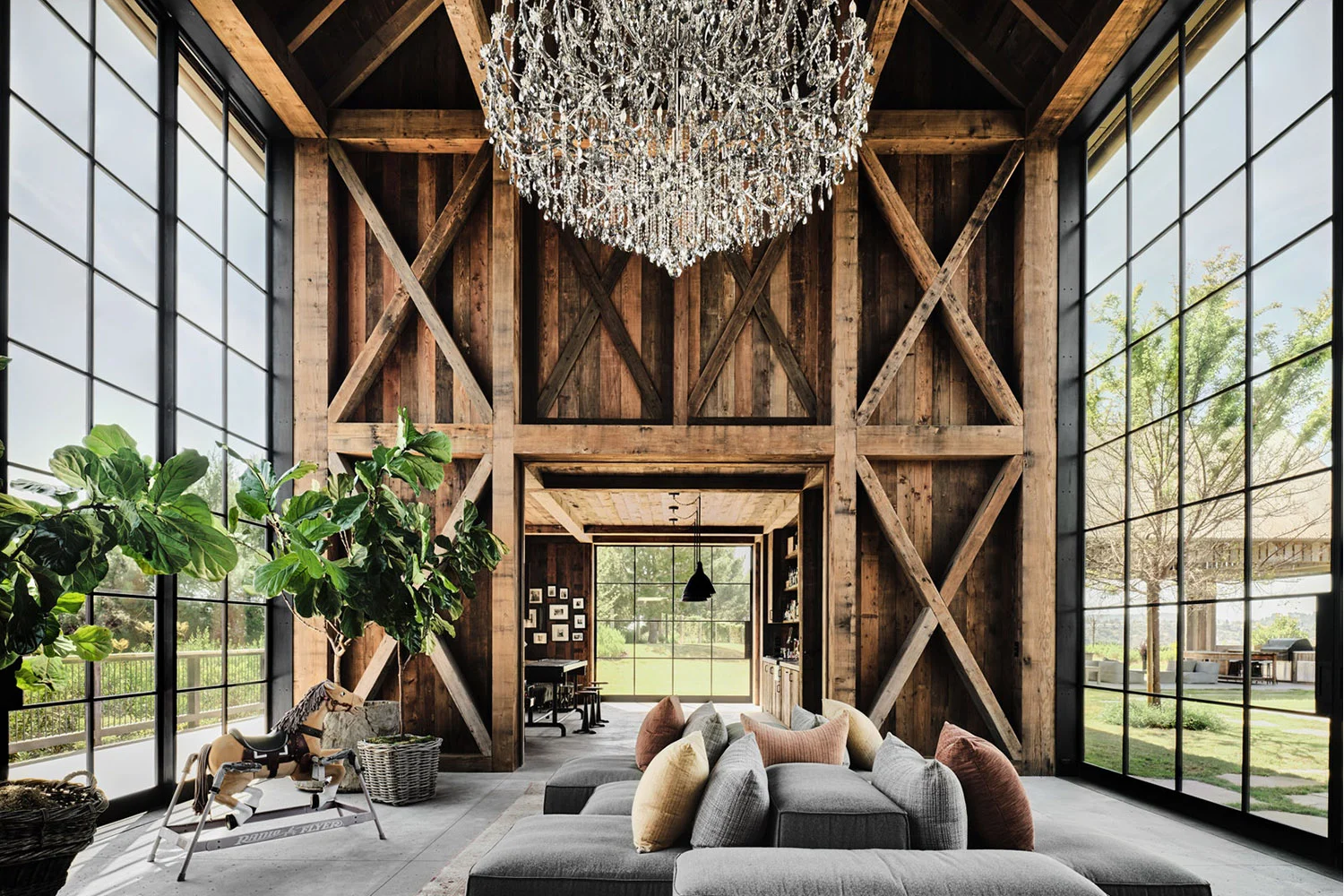How Big Box Retail Vacancies Are Quietly Reshaping Suburban Land Values
Oct 9, 2025
From Shopping Temples to Empty Shells
Once upon a time, nothing screamed “progress” louder than a brand-new Canadian Tire or a gleaming Costco rising from the suburban soil. Malls had fountains, parking lots had the capacity of small airports, and families in minivans flocked to these temples of consumerism.
Fast-forward to 2025, and many of those retail cathedrals are now eerily quiet. Sears is dead. Bed Bath & Beyond is beyond. Staples is more ghost town than office supply empire. Whole swaths of Metro Vancouver’s suburban landscape are pockmarked with half-empty plazas, fading signs, and parking lots big enough to make Elon Musk drool about Mars colonies.
And while most people just see an abandoned Best Buy, what’s really happening is far bigger: these vacancies are quietly reshaping suburban land values.
The Death of the Big Box Dream
In the late ’90s and early 2000s, big box retail was the suburban status symbol. Cities like Surrey, Coquitlam, and Langley rolled out zoning red carpets for Home Depots and Walmarts. Developers snapped up farmland to build plazas the size of European villages.
But two big killers arrived:
E-commerce. Why drive to Target for socks when Amazon drops them at your door by tomorrow?
Shifting demographics. Millennials would rather Uber to a craft brewery than park in a sea of asphalt for 10% off patio furniture.
The result: once-bulletproof big boxes are now struggling, and their cavernous shells have become liabilities instead of assets.
Suburban Land Values: The Domino Effect
When a Best Buy dies in Coquitlam, it doesn’t just leave an eyesore. It drags down the land economics of the entire surrounding parcel. Anchors drive foot traffic. Anchors justify rents for the small stores around them. Without anchors, the dominoes fall.
Vacancy spreads. Smaller tenants lose foot traffic and bail.
Landowners panic. Lease values drop, and refinancing gets harder.
Cities lose tax revenue. Commercial rates nosedive, shifting the burden to… you guessed it, homeowners.
Speculators smell blood. Developers begin eyeing parking lots as future condo farms.
In other words: one “For Lease” sign on a former Sears can ripple into a fundamental revaluation of entire suburban blocks.
Ghost Boxes: Vancouver’s Suburban Landmarks
Let’s take a tour.
Metrotown Sears (Burnaby): Once the biggest department store in the country, it now stands as an empty, echoing relic while developers scheme 65-storey condo towers in its place. Land value skyrocketed even as retail value flatlined.
Richmond’s Staples Plaza: Once the epicenter of office supply glory, now reduced to a graveyard of seasonal Halloween pop-ups.
Guildford Sears (Surrey): Dead since 2018, finally bulldozed, now a developer’s lottery ticket.
Each ghost box tells the same story: retail death is residential opportunity.
Why Developers Love Dead Retail
For developers, a dead box store is like an unwrapped gift. Think about it:
Massive parcels of land. Big box sites often sprawl across 5–20 acres, already zoned commercial, with infrastructure in place.
Transit adjacency. Many sit near SkyTrain extensions or major arterials, making them perfect for mixed-use redevelopment.
Public appetite. Communities hate ugly vacancies but cheer when shiny new towers are promised.
So while your average suburban resident sees a depressing empty Toys “R” Us, developers see the launch pad for 1,200 condos and a Whole Foods.
The Parking Lot Premium
Let’s not forget the parking lots. Big box retail comes with oceans of asphalt, often more valuable than the store itself. In an era where every square foot of Metro Vancouver land is monetized, those asphalt deserts are redevelopment jackpots.
Imagine a Costco lot in Port Coquitlam. Pave paradise? Already done. Now un-pave it into mid-rise condos with underground parking and a dog park. That’s the suburban gold rush of 2025.
Cities in a Bind
Here’s the political wrinkle: municipalities love commercial taxes. A Walmart pays far more per square foot in property tax than the average townhouse. But when Walmarts die, cities face a fiscal cliff.
Do they:
Keep zoning retail and pray for a revival (spoiler: not coming)?
Rezone for residential and risk tax base erosion?
Or approve mixed-use towers and watch their infrastructure buckle?
This balancing act is why city councils drag their feet. No one wants to be the mayor who swapped a Sears for a hundred Airbnbs.
The Suburban Mall Extinction Timeline
You can map suburban land value shifts by mall death dates:
2014–2018: Sears, Target, Future Shop collapse. Land around malls begins speculative churn.
2019–2022: Pandemic accelerates online shopping, weakens in-person anchors.
2023–2025: Permanent closures pile up. Dead big boxes get rezoned for condos, data centers, or fulfillment hubs.
By 2030, many suburban malls won’t exist. Their land value will have migrated almost entirely into residential, forever reshaping suburban economics.
Enter the Warehouses: Logistics is King
Of course, not all dead retail becomes condos. Some turn into Amazon fulfillment centers, cold storage warehouses, or self-storage.
Richmond: Old retail boxes become logistics hubs for YVR cargo.
Surrey/Langley: Former big box strips flip into storage lockers for the condo-dwelling masses.
Delta: Empty lots reborn as distribution centers, conveniently near ports.
This shift reshapes land values too. Commercial rents stabilize not around foot traffic, but around trucking logistics.
Case Study: Langley’s Retail Graveyard
Langley, once the suburban mecca of box stores, now has more “For Lease” signs than Starbucks. Dead Canadian Tires, half-empty strip malls, abandoned electronics stores.
Developers circle like vultures. What was once farmland turned retail is now farmland-turned-condo pipeline. Land values skyrocket not because of retail demand but because of residential rezoning potential.
Winners and Losers
Winners:
Developers who can land-bank vacant parcels.
Logistics companies turning ghost stores into warehouses.
Speculators who read the writing on the zoning bylaw wall.
Losers:
Cities bleeding commercial tax revenue.
Small businesses losing anchor traffic.
Suburban residents stuck with dead plazas until rezoning finally happens.
The Inevitable Condo-ization of Everything
At the end of the day, Metro Vancouver land is too valuable to waste on parking lots and empty Staples stores. The trajectory is clear: suburban retail land is quietly being repriced as residential land.
And once that shift happens, there’s no going back. Why rebuild a Sears when you can build three towers and a Save-On-Foods at ground level?
Conclusion: Watch the Empty Signs
The future of suburban land values in BC isn’t written in glossy condo brochures. It’s written on the faded “For Lease” banners hanging over old box stores.
Every dead Best Buy is a placeholder for condos. Every empty parking lot is a future rezoning fight. Every vacant Toys “R” Us is tomorrow’s data center.
The suburbs are being reshaped — not loudly, not dramatically, but quietly, vacancy by vacancy. If you want to understand tomorrow’s land values, don’t just watch the MLS. Watch the parking lots.


























